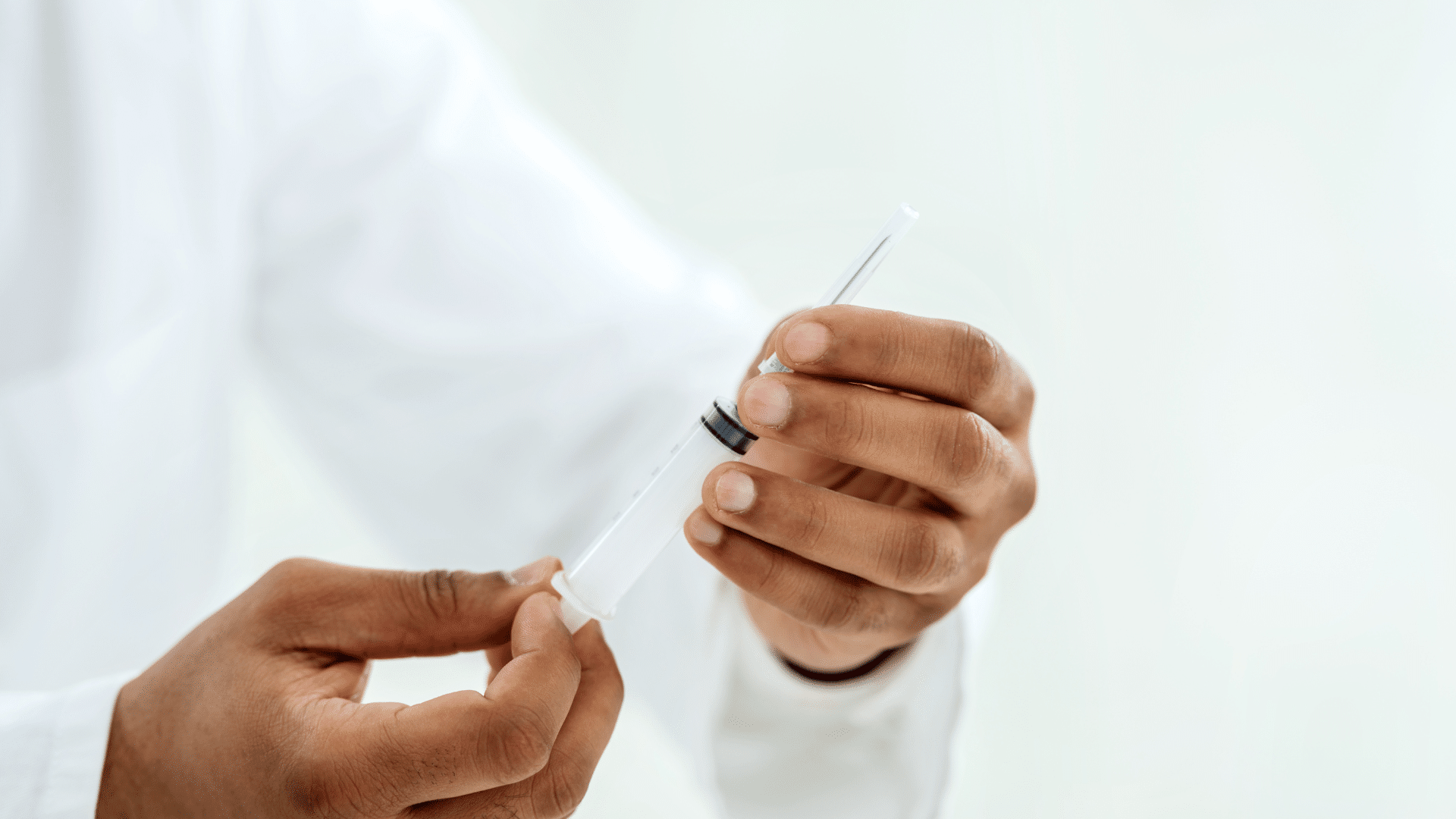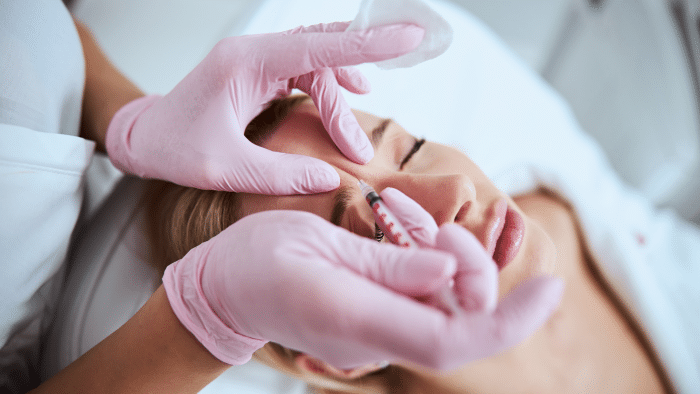
Post-injection edema is a common occurrence after dermal filler treatments. Recent studies have found that approximately 24% of patients undergoing cosmetic procedures with fillers experience some degree of swelling after the treatment. This localized fluid buildup can lead to discomfort and an altered appearance, prompting the need for effective management strategies.
Juvederm is a widely recognized dermal filler known for its efficacy and safety profile. However, like any cosmetic treatment, it can lead to swelling as a natural response to the injection. Understanding Juvederm’s composition and interaction with the body’s tissues is crucial for effectively managing post-injection symptoms.
In this article, we will delve into the causes behind the swelling, discuss preventive measures, and provide practical advice for post-treatment care to ensure the best possible outcomes for those seeking aesthetic enhancements.
Key Takeaways
- Juvederm injections can lead to post-injection edema, which is a common side effect experienced by patients.
- Understanding the causes and mechanisms of Juvederm swelling is crucial for effective management.
- Pre-treatment measures, such as proper patient selection and education, can help reduce the risk of swelling.
- Post-treatment techniques, including cold compresses, lymphatic massage, and over-the-counter medications, can help address swelling.
- Evidence-based insights and research on swelling management can empower medical professionals to optimize patient comfort and satisfaction with Juvederm treatments.
About: Doctor Medica is your trusted supplier of top-quality dermal fillers, viscosupplements, and more for your medical practice. We offer genuine products from leading brands at the lowest prices. Contact Doctor Medica today if you want to buy Juvederm wholesale for your practice.
Causes and Mechanisms of Juvederm Swelling

Hyaluronic acid is a star in dermal fillers, pulling water to the tissues and causing them to swell. This natural substance helps keep skin plump and hydrated. These fillers can have a variety of applications, with doctors using Juvederm for 11 lines or the glabellar lines. Yet, this same ability can lead to swelling after injection as the body reacts to the new volume.
Moving from how hyaluronic acid affects tissues, we see swelling and inflammation as common responses. These start when the body reacts to Juvederm injections. This reaction can cause redness, heat, pain, and swelling right where the injection was given.
Pre-Treatment Measures to Reduce Swelling Risk
Choosing the right patient is critical to avoiding problems with soft tissue fillers. Doctors must check if a person can safely get treatments like Juvederm. They look at health history, skin type, and what someone wants from treatment.
Educating patients on common side effects is vital. Tell them about possible bruising, redness, pain, and swelling after Juvederm injections. This helps set the right expectations. Let them know these effects are usually temporary.
Post-Treatment Techniques for Addressing Swelling

Cold compresses are a go-to method for managing swelling after Juvederm injections. Wrapping ice or cold packs in a soft cloth and then applying them to the swollen area for 10 to 15 minutes can work wonders.
Lymphatic massage is a gentle way to move fluid out of tissues into lymph nodes. It helps with swelling after surgery or injections by keeping the lymph system working well.
Antihistamines like loratadine and cetirizine can help manage swelling after Juvederm treatments. These over-the-counter medications also reduce edema, a common side effect.
Evidence-Based Insights for Managing Post-Injection Edema

Swelling after Juvederm injections is common. The body reacts to the hyaluronic acid filler, leading to edema. Because the filler attracts water, this swelling can last a few minutes to 2-3 days.
Studies compare different ways to lessen swelling after Juvederm injections. They show that using a blunt-tip cannula reduces swelling, pain, and bruising compared to other methods.
Empowering Medical Professionals to Manage Swelling Effectively
It is vital to ensure patients feel comfortable and happy. This focus helps medical professionals better manage swelling from Juvederm injections. Patients who are pleased with their care tend to heal better and quicker.
Keeping patients comfortable and satisfied leads to better Juvederm treatment results. Swelling management plays a key role here. Medical professionals have tools, such as cooling techniques and hydration advice, to significantly improve patient outcomes.
Conclusion
Juvederm swelling, though joint, doesn’t have to be a big problem. Doctors and patients can manage it well with the proper steps before and after treatment. Cold compresses, gentle massages, and sometimes medicine help reduce swelling quickly.
Research shows these methods work well for most people. So, managing Juvederm swelling is all about knowing what to do before and after getting fillers. This process keeps everyone happy – doctors get better results, and patients enjoy their new look with less hassle.
FAQs
1. What’s the best way to reduce swelling after Juvederm injections?
Applying a cold compress gently on the area can help lessen the swelling.
2. How long does it usually take for the swelling to go down?
Swelling typically goes down within a week, but sometimes it can last up to two weeks.
3. Can I still wear makeup after getting Juvederm injections?
You can wear makeup, but waiting at least 12 hours after your treatment is best.
4. Should I avoid any activities post-injection?
Avoid strenuous exercise and heat exposure for 24 hours to help reduce swelling.
5. Should I eat or drink anything to help with the swelling?
Drinking plenty of water and avoiding salty foods might help reduce swelling faster.
References
Anderson, W. J., Santos da Cruz, N. F., Lima, L. H., Emerson, G. G., Rodrigues, E. B., & Melo, G. B. (2021). Mechanisms of sterile inflammation after intravitreal injection of antiangiogenic drugs: a narrative review. International Journal of Retina and Vitreous. https://doi.org/10.1186/s40942-021-00307-7
Siperstein R. (2022). Infraorbital Hyaluronic Acid Filler: Common Aesthetic Side Effects With Treatment and Prevention Options. Aesthetic surgery journal. Open forum, 4, ojac001. https://doi.org/10.1093/asjof/ojac001
Ablon G. (2016). Understanding How to Prevent and Treat Adverse Events of Fillers and Neuromodulators. Plastic and reconstructive surgery. Global open, 4(12 Suppl Anatomy and Safety in Cosmetic Medicine: Cosmetic Bootcamp), e1154. https://doi.org/10.1097/GOX.0000000000001154
Related Articles
Joanna Carr
What Is Liporase?
Learn what Liporase is and how it works in aesthetic medicine. Discover its role in dissolving hyaluronic acid fillers, managing complications, and en...
Joanna Carr
Botox for TMJ: An Innovative Approach to Pain Relief
Interested to learn more about Botox for TMJ, An Innovative Approach to Pain Relief? Browse Doctor Medica's comprehensive listing of blog posts.
Joanna Carr
Mirena and Hormones – What’s the Relationship?
Mirena is a hormonal IUD that delivers levonorgestrel directly into the uterus to prevent pregnancy and manage symptoms associated with hormone-relate...


